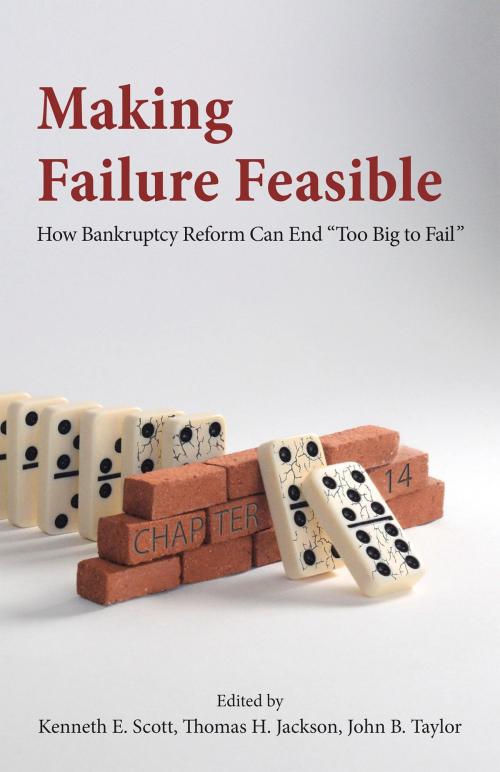Making Failure Feasible
How Bankruptcy Reform Can End Too Big to Fail
Business & Finance, Business Reference, Government & Business, Nonfiction, Social & Cultural Studies, Political Science, Politics, Economic Policy| Author: | ISBN: | 9780817918866 | |
| Publisher: | Hoover Institution Press | Publication: | October 1, 2015 |
| Imprint: | Hoover Press | Language: | English |
| Author: | |
| ISBN: | 9780817918866 |
| Publisher: | Hoover Institution Press |
| Publication: | October 1, 2015 |
| Imprint: | Hoover Press |
| Language: | English |
In 2012, building off work first published in 2010, the Resolution Project proposed that a new Chapter 14 be added to the Bankruptcy Code, exclusively designed to deal with the reorganization or liquidation of the nation's large financial institutions. In Making Failure Feasible, the contributors expand on their proposal to improve the prospect that our largest financial institutions—particularly with prebankruptcy planning—could be successfully reorganized or liquidated pursuant to the rule of law and, in doing so, both make resolution planning pursuant to Title I of Dodd-Frank more fruitful and make reliance on administrative proceedings pursuant to Title II of Dodd-Frank largely unnecessary. This book highlights the problems of dealing with large financial institutions in distress, and Chapter 14's responses to those twin issues. The contributors first outline the basic features of Chapter 14 and point to their continuation as well as additional features to ensure the quick resolution of large financial institutions that would not depend on government discretion and would mesh with emerging ideas about cross-border resolution. The remaining chapters provide the context for reform and show how Chapter 14, as envisioned in this book, would be a substantial advance on administrative-focused resolution procedures.
In 2012, building off work first published in 2010, the Resolution Project proposed that a new Chapter 14 be added to the Bankruptcy Code, exclusively designed to deal with the reorganization or liquidation of the nation's large financial institutions. In Making Failure Feasible, the contributors expand on their proposal to improve the prospect that our largest financial institutions—particularly with prebankruptcy planning—could be successfully reorganized or liquidated pursuant to the rule of law and, in doing so, both make resolution planning pursuant to Title I of Dodd-Frank more fruitful and make reliance on administrative proceedings pursuant to Title II of Dodd-Frank largely unnecessary. This book highlights the problems of dealing with large financial institutions in distress, and Chapter 14's responses to those twin issues. The contributors first outline the basic features of Chapter 14 and point to their continuation as well as additional features to ensure the quick resolution of large financial institutions that would not depend on government discretion and would mesh with emerging ideas about cross-border resolution. The remaining chapters provide the context for reform and show how Chapter 14, as envisioned in this book, would be a substantial advance on administrative-focused resolution procedures.















